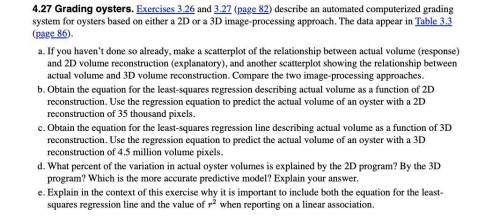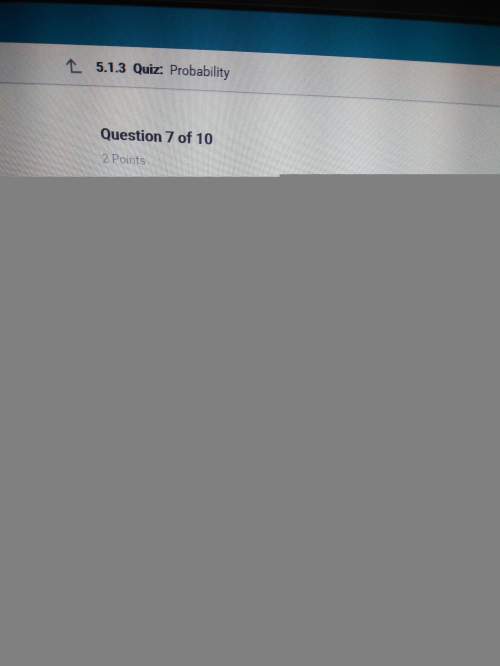
Mathematics, 04.10.2020 05:01 tdowling331
4.27 Grading oysters. Exercises 3.26 and 3.27 (page 82) describe an automated computerized grading system for oysters based on either a 2D or a 3D image-processing approach. The data appear in Table 3.3 (page 86).
If you haven’t done so already, make a scatterplot of the relationship between actual volume (response) and 2D volume reconstruction (explanatory), and another scatterplot showing the relationship between actual volume and 3D volume reconstruction. Compare the two image-processing approaches.
Obtain the equation for the least-squares regression describing actual volume as a function of 2D reconstruction. Use the regression equation to predict the actual volume of an oyster with a 2D reconstruction of 35 thousand pixels.
Obtain the equation for the least-squares regression line describing actual volume as a function of 3D reconstruction. Use the regression equation to predict the actual volume of an oyster with a 3D reconstruction of 4.5 million volume pixels.
What percent of the variation in actual oyster volumes is explained by the 2D program? By the 3D program? Which is the more accurate predictive model? Explain your answer.
Explain in the context of this exercise why it is important to include both the equation for the least-squares regression line and the value of
r
2
when reporting on a linear association.



Answers: 1


Another question on Mathematics

Mathematics, 21.06.2019 19:00
For the following geometric sequence, find the recursive formula. {-80, 20, -5, } i need : ')
Answers: 1

Mathematics, 21.06.2019 20:30
Can someone me with #s 8, 9, and 11. with just one of the three also works. prove using only trig identities.
Answers: 3

Mathematics, 21.06.2019 22:00
Select the conic section that represents the equation. 3x2 + 3y2 -2x + 4 = 0
Answers: 2

Mathematics, 21.06.2019 22:30
If a flying disk is 139 meters in the air and travels at an average of 13 m/s how long is it in the air
Answers: 2
You know the right answer?
4.27 Grading oysters. Exercises 3.26 and 3.27 (page 82) describe an automated computerized grading s...
Questions



Mathematics, 01.09.2019 23:10


Mathematics, 01.09.2019 23:10






Mathematics, 01.09.2019 23:10

Mathematics, 01.09.2019 23:10





English, 01.09.2019 23:10


Chemistry, 01.09.2019 23:10





